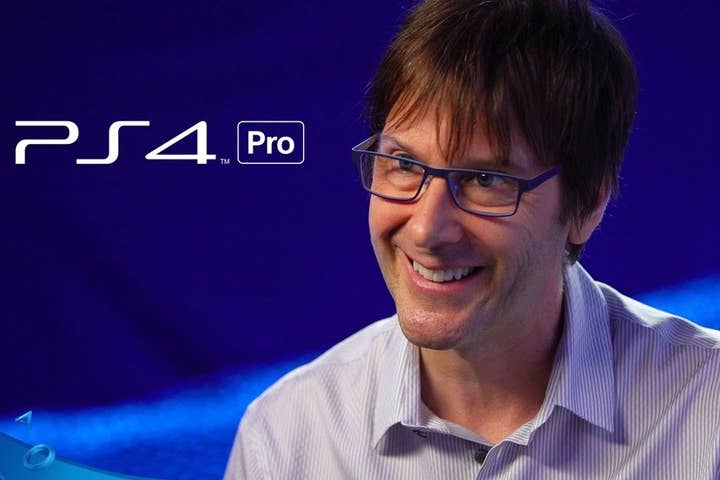Sony: We still believe in console generations
PS4 architect Mark Cerny on the Pro's impact on devs and how the hardware can effectively produce over 8 teraflops of power
Sony is gearing up for the launch of its PS4 Pro mid-generation upgrade (set for November 10), and PS4 architect Mark Cerny has stressed that the Pro console is just that; he and Sony are still of the mindset that having full console generations matter. Speaking with Gamasutra in much technical detail, Cerny commented, "I believe in generations. Generations are a good thing. So, philosophically, we believe in them. We believe they continue, and this is a mid-generation release."
While Sony is no doubt working on that full generation console of the future behind-the-scenes, Cerny wanted to be crystal clear that Sony is looking to make supporting the Pro in addition to the older PS4 as painless as possible. "The target was to make sure that support [for the PS4 Pro] could be done for a fraction of a percent of the overall effort," Cerny said. "And I do mean a fraction of a percent. I mean, I've run the math, and it's 0.2 or 0.3 percent for these projects -- some of them. So at that point, I think it's very natural for the development community to support the platform."
Interestingly, when looking at the architectural improvements that PS4 Pro offers, Cerny pointed out that the way the system handles computing enables it to provide more than the base 4.2 teraflops that have been advertised. "It's possible to perform two 16-bit operations at the same time, instead of one 32-bit operation. In other words, with full floats, PS4 Pro has 4.2 teraflops of computational power. With half floats, it now has double that -- which is to say, 8.4 teraflops of computational power. As I'm sure you understand, this has the potential to radically increase the performance of games," he commented.
We're not entirely sure what that means since we don't engineer hardware for a living, but we do know that Microsoft's Scorpio is planned to have 6 teraflops of power.
Cerny also remarked that Sony was able to speed up the PS4 CPU "as high as it could go on the new process technology," which is about 2.1 Ghz. That gives the Pro roughly 30% more CPU power. Beyond that, Sony decided to add in 1 GB of conventional DRAM and the Pro's 8 GB of GDDR5 RAM has also been given a frequency boost.
"We felt games needed a little more memory, about ten percent more. So we added about a gigabyte of slow, conventional DRAM to the console," said Cerny, who went on to explain that Pro will handle memory allocation differently. "On the standard [PS4], if you're swapping between an application like Netflix and a game, Netflix is still resident in system memory, even when you're playing the game. We use that architecture because it allows for very quick swapping between applications. It's all already in memory.
"On PS4 Pro, we do things a bit differently. When you stop using Netflix, we move it to the gigabyte of slow, conventional DRAM. Using that sort of strategy frees up almost a gigabyte of our 8 GB of GDDR5. We use 512 megabytes [of that] for games, which is to say that the games can use 5.5 GB rather than 5 GB. And we use most of the rest to make the PS4 Pro interface 4K, rather than the 1080p it's been to date. So when you hit the PS4 button, that's a 4K interface."
There's plenty more on the technical side if you're interested in the full interview.

